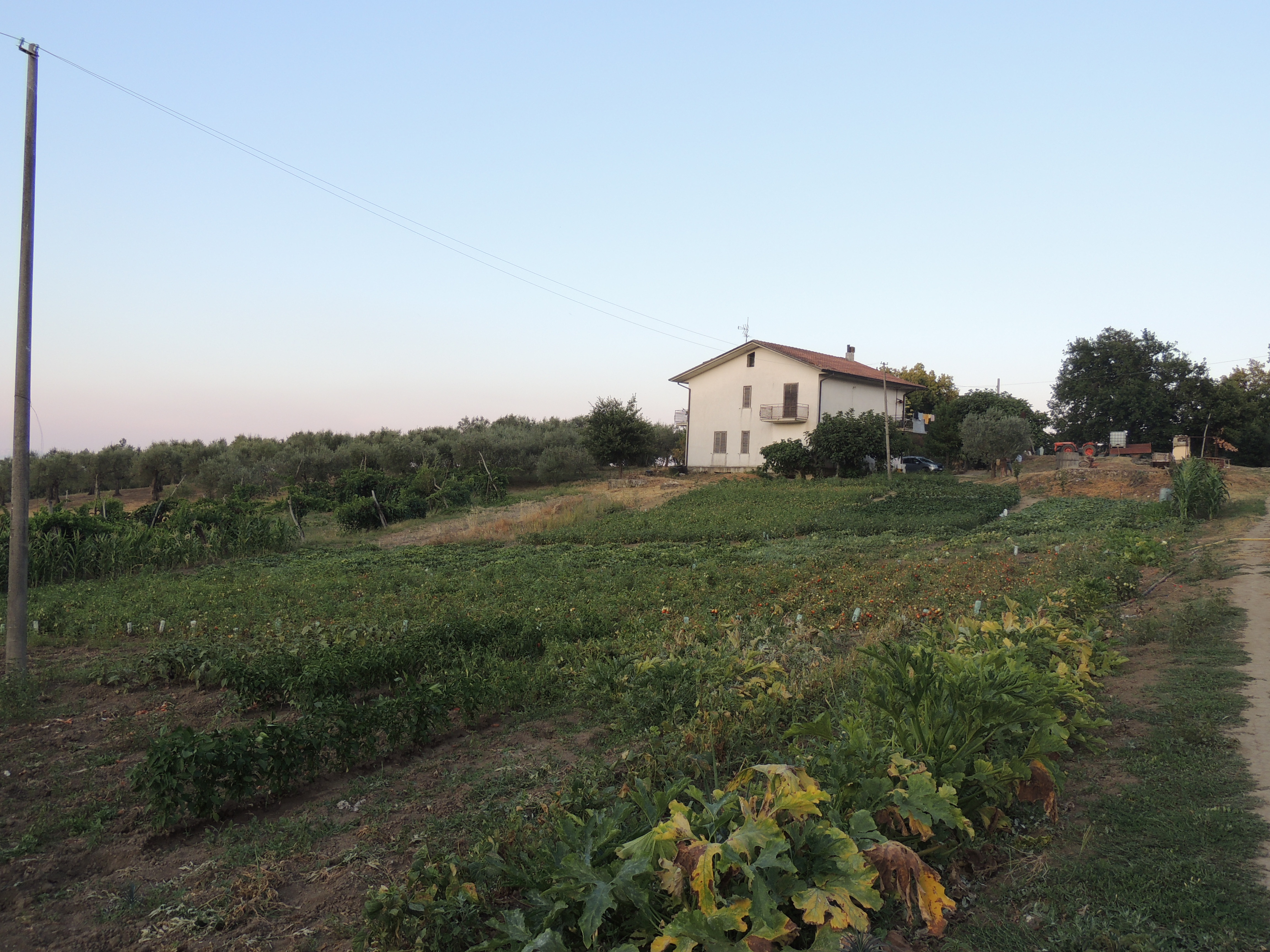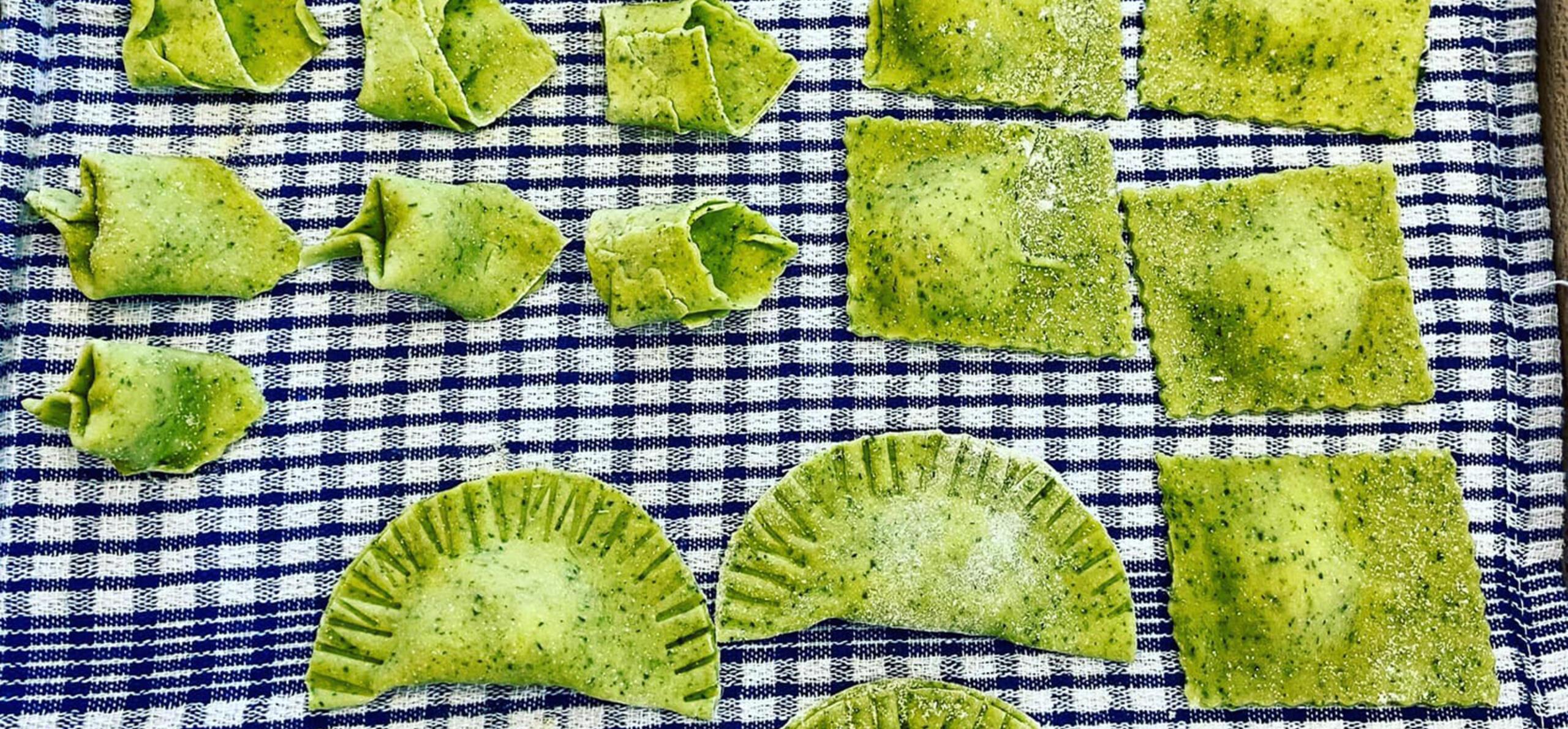Food has been one of the most significant ways that migrants from different provinces of Italy have expressed their local identity while assimilating within British society. As Reading’s interest in Italian cuisine has grown, its Italian community has responded, integrating into Reading’s society while celebrating its ethnic identity.
During the 1950s, it was difficult in Reading to find the Italian foods that the Italian migrant community had grown up eating. When travelling to Italy by car, Reading’s Italians brought foods over for their own personal, familial and community enjoyment. The foods brought back depended on the region. As Città Sant’Angelo is covered with olive groves, Angela often brought home-made olive oil back to Reading, while Ciriaco’s family supplied produce from their farm in Torre Le Nocelle.
Every year, my grandfather would prepare a leg of the pig for us and that would be salami that mum and dad would bring home.
- Ciriaco

Ciriaco’s family farm in southern Italy.
Traditional and local cuisine
Some Italians saw this as a commercial opportunity. ‘Antonio the Pasta Man’ travelled into Reading every Saturday in his blue van selling typical Italians foods such as pasta, salami and cheese to Italian migrants and Reading’s locals. Many of Reading's young Italians have fond memories of ‘Antonio’, as shared by Mena and Giulio below.
Fresh foods which could not be brought home from Italy were grown locally. These small herb gardens recreated the rural landscape of Southern Italy. Migrants could express their local identity and retain certain tastes and smells associated with home.
For the seasoning [...] I went to ask Italian families [...] you could not get basil unless someone grew it in their back garden.
- Rocco
Out of necessity and curiosity, some Italians tried British foods. However, the different cultural practises were hard to grasp.
It was bacon, eggs, sausage, beans and toast, but they brought me only one slice of toast. I said to him, “What am I going to do with only one slice of bread?" In the end I had about six slices – the pub was bewildered!
- Rocco’s first English breakfast at The Granby
Others saw British food as normal, rather than Italian. This allowed them to fit in within British society and culture.
I wanted normal [English] food but we didn’t have normal food, as in chips, chicken nuggets and sausages [...] we never had any of that.
- Mena (second-generation Italian)
From homely to commercial
Italy’s prospects improved in the 1960s. The country became a commercial success and a brand name. Italian migrants capitalised on this success. They built on Italy’s positive image and enriched Reading’s culinary scene.
Coffee bars ‘Melrose’ on Oxford Road and ‘Valentino’ along Southampton Street exposed Reading’s locals to Italian cultural practices such as coffee drinking. As Rocco discusses, these also housed the Italian Youth Club providing a space for younger Italians to socialise twice a month.
During these years, Italian foods became more readily available in supermarkets. This made Italian food more accessible to Reading’s locals and meant that fewer of its Italian community brought foods back from Italy.
Even though it became easier for Reading’s Italian community to buy foods they were familiar with, knowing how much money to give the shopkeeper remained a challenge. As England had a different currency to Italy, it took many Italians living in Reading a while to become familiar with the pound.
From the 1970s, Italian food became increasingly ‘Anglicised’ and a ‘general’ Italian cuisine was adopted. Traditional Italian dishes were given an English spin, many of which are still popular today.
The first Italian restaurants
Migrants responded to this local interest by opening restaurants selling popular ‘Italian’ dishes and promoting stereotypical images of Italy. While migrants conformed to these stereotypes, they established careers, aiding assimilation.
Restauranteur Antonio Sale opened the renowned Pepe Sale in Reading in 1998.
While Toni does not own Pepe Sale anymore, it can still be found on Queens Walk in Reading. Still inspired by his Italian heritage and love of fresh pasta, today Toni runs his pasta making workshop Pasta Academy from his home in Caversham. Click here to listen to the kind of things you can make in one of these workshops! (hyperlink to Toni’s audio clip on Voices page).
A return to authenticity
Things changed once again in the 2000s. The rise of British ‘foodie’ culture and the 21st century consumer demand for authentic, healthy eating has made regional Italian dishes popular again. This interest offers a symbolic capital for second and third-generation Italians in Reading.
The pasta [workshops] started and then someone asked if we did pizza [...] then we started doing pizza parties as well.
- Jacky, third-generation Italian and owner of Delights of Italy

Delights of Italy along Meadow Road, Reading.
While it is no longer there today, Jacky has fond memories of running Delights of Italy and with engaging with Reading’s Italian and non-Italian community. Listen to Jacky discuss the shop and memories she has of the place.
Today, British recognition of Italy combines traditional association of style and fashion with a more modern appreciation of wellbeing and healthy eating. Italian delicatessens in Reading including ZottaDeli and Mama’s Way encourage the town’s locals to make authentic Italian dishes at home.
The significance of food
For Italians arriving in Reading after the Second World War, food was not just a component of migrant identity: it allowed them to become better integrated and accepted within the town.
As Reading’s interest in Italian cuisine developed, from popular and commercial to authentic dishes, its Italian community responded to these changes in imaginative ways. They were able to reposition and market their regional cuisine to tap into ideas around fresh produce and healthy eating. Italian tastes and cultural habits have impacted local culture and changed the town’s palette time and time again. Reading is now a more vibrant, modern and cosmopolitan place which celebrates the cuisines and cultures of its many different communities.





